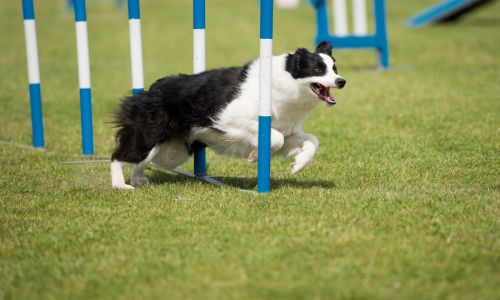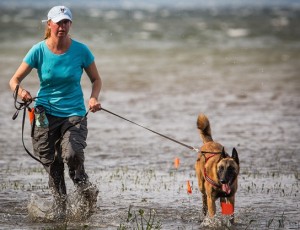 Over the last 10-20 years many dog sports have been gaining in popularity. With this trend has developed the field of canine sports medicine – the customized and specialized care of canine athletes.
Over the last 10-20 years many dog sports have been gaining in popularity. With this trend has developed the field of canine sports medicine – the customized and specialized care of canine athletes.
Sports like agility, disk dog, tracking, dock diving, flyball and earthdog have joined more established pursuits like dogsledding, greyhound racing and field trials in the world of canine sports. However, veterinary medicine has been a bit slower to catch up in terms of understanding the effects of sports on dogs, ways to maximize performance and how to best manage injuries.
Injuries can be sustained to a variety of tissues including bones (fractures), ligaments (tears, sprains), tendons (tears, strains), skin, and the cardiovascular system. To some extent, types of injury depend on the type of dog and demands of a particular sport, but there are many common injuries across all of veterinary sports medicine. We’ll just do a quick overview here, and go into more detail about the diagnosis, treatment, and prevention of specific injuries in subsequent blog entries!
Foot pad and nail injuries are common in sporting dogs for obvious reasons. Many such injuries are minor and can be treated by the owner, but full thickness pad lacerations may require surgery, and puncture wounds have to be carefully monitored to avoid flexor tendonitis.

Forelimb injuries are among the most common types of injuries in sporting dogs, particularly in agility dogs. The most common issues include biceps brachii tendonitis, supraspinatus tendinopathy, infraspinatus contracture, and medial shoulder instability. Teres minor myopathy, collateral ligament ruptures, and subscapularis tendinopathy are also common in dogs that do a lot of jumping, turning, or repetitive motions. As with any active dog, orthopedic issues like shoulder and elbow arthritis, OCD, fractures, and luxations are also somewhat common.

However, patellar tendonitis and long digital extensor tendonitis are almost as common in canine athletes and rarely diagnosed. Other acute soft tissue issues include myopathy and contracture of the gracilis and semitendinosus muscles. Occasionally in heavily muscled dogs (greyhounds especially) there can be avulsion of the gastrocnemius or popliteus. Chronic injuries are most commonly Achilles tendon ruptures, iliopsoas myopathy, and lumbosacral disease.
As the popularity of dog sports continues to increase, sports medicine veterinarians become an increasingly valuable resource in diagnosing many of these (sometimes subtle) injuries and performance issues not seen in general practice. Most common injuries cause waxing and waning, intermittent lameness and performance changes. Diagnostics involve a combination of radiography, ultrasonography, MRI, arthroscopy, as well as a thorough neurologic, orthopedic and pathofunctional exam. If you suspect one of these injuries, or notice changes in performance in your favorite canine athlete, don’t hesitate to call, email, or stop by Two Hands Four Paws to learn how we can help.
Make sure to check out my next entries to learn more about the injuries listed above and how to diagnose, treat, and prevent them!
Dr. B

